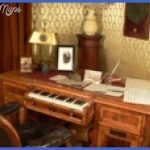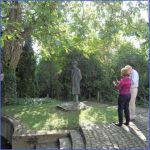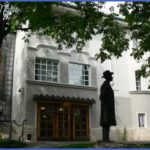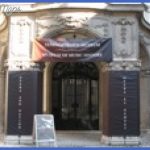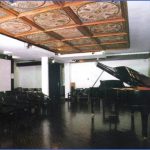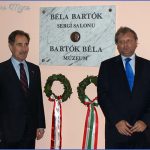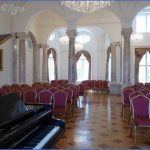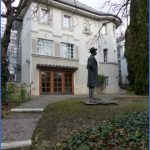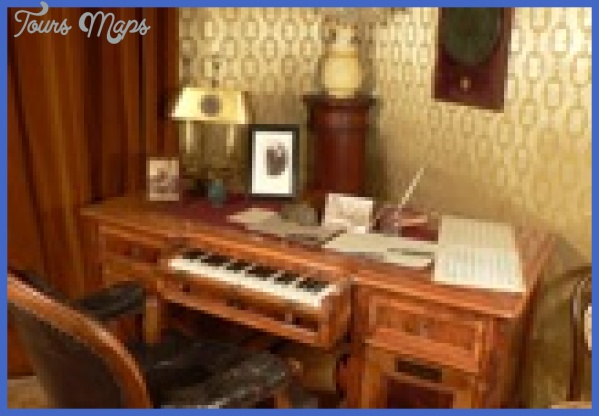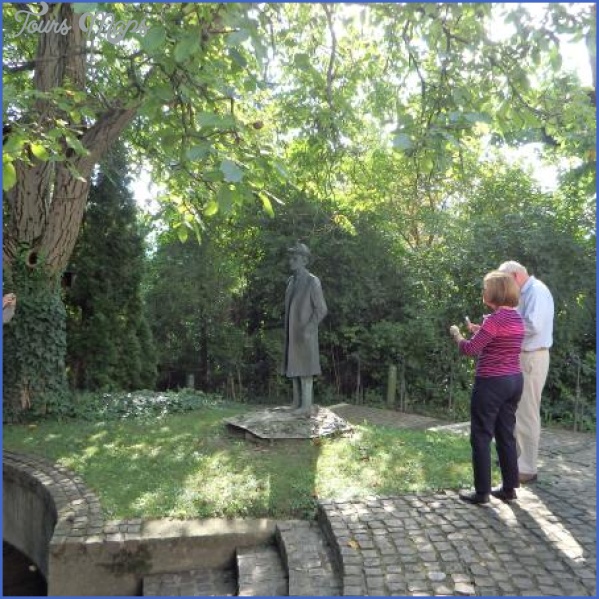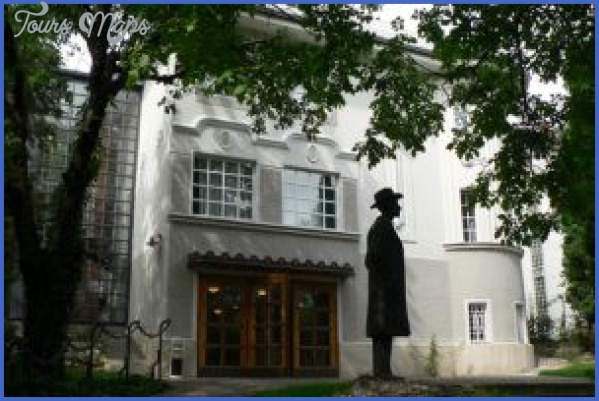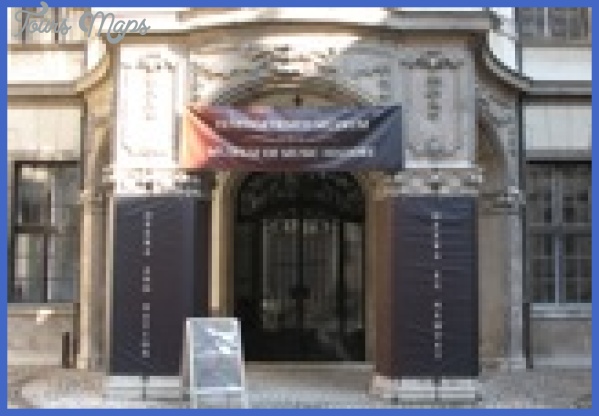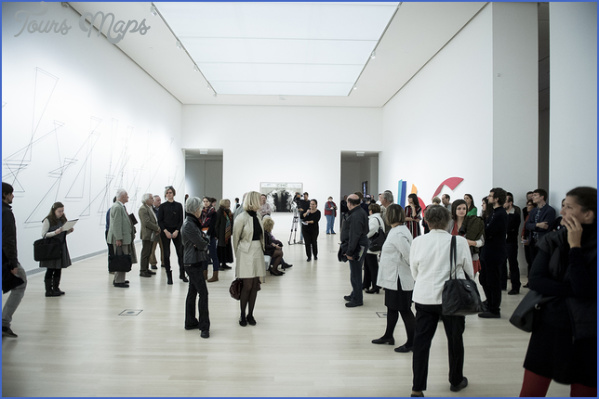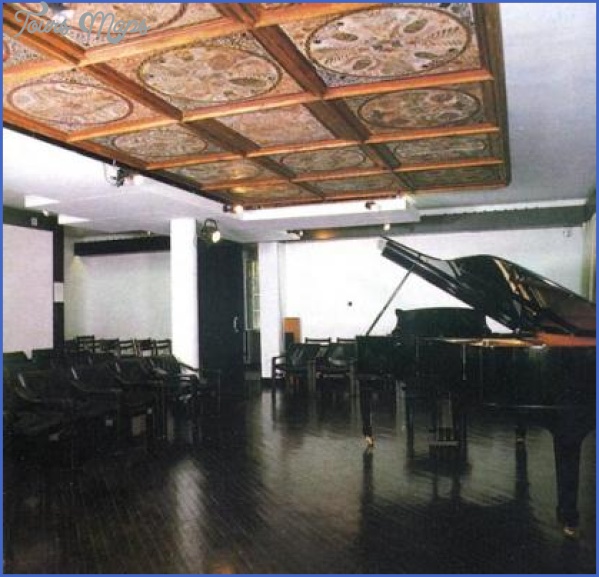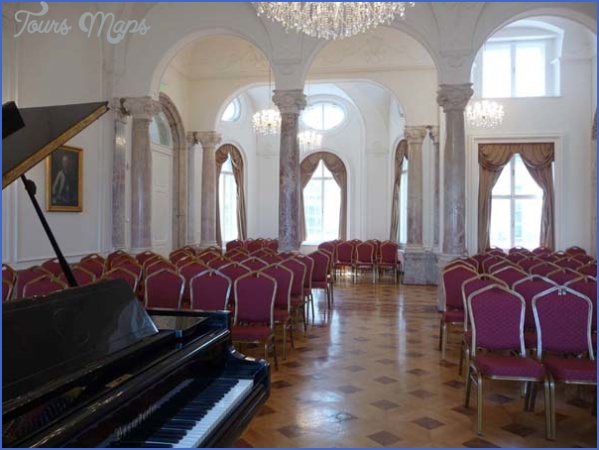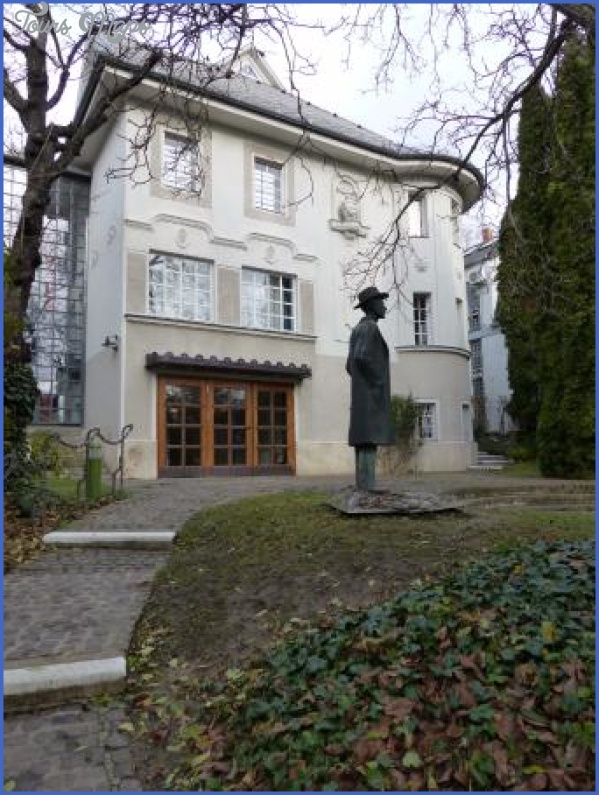Bela Bartok was born on 25 March 1881 in a far corner of the Austro-Hungarian Empire: today Sannicolau Mare (in Hungarian Nagyszentmiklos, in German Gross Saint Nikolaus) is part of Romania, a few kilometres from the Hungarian border. His father was head of the local school for peasant children. A bilingual plaque, in Romanian and Hungarian, marks the house that now occupies the site of his birthplace, on the western edge of the town, at Strada Cerbului 3. Sannicolau Mare further commemorates Bartok with a bust and, since 1981, an exhibition emphasizing his Romanian connections, which in 1998 was moved to a bright, spacious room in the local history museum (formerly the town’s manor house). The displays include pictures of his family and of the town where he lived until he was eight; examples of his folksong collecting, along with his correspondence with the Romanian ethnomusicologist Constantin Brailoiu; copies of the Romanian folk music he edited as well as the music it inspired him to compose; a summary of his connections with other Romanian musicians (notably George Enescu) and cities (Arad, Brasov, Bucharest, Cluj, Lugoj, Oradea and Timisoara); and publications about Bartok in Romanian and Hungarian.
In 1907 Bartok took up a piano professorship at the Budapest Academy of Music. From 1932 to 1940 he and his family lived in the hillside suburban villa in Buda, at Csalan ut 29, now open to the public in his memory. They occupied the first-floor flat, with one Bechstein and two Bosendorfer pianos. Bartok gave private lessons and rehearsed at home for his concerts, all the while composing: he produced the Fifth String Quartet in 1934, Music for Strings, Percussion and Celesta in 1937, the Violin Concerto and Contrasts (for Joseph Szigeti and Benny
BARTOK MUSEUM Photo Gallery
Rights were not granted to include these illustrations in electronic media.
Bartok’s house in Buda Goodman) in 1938 and Divertimento for Strings (for Paul Sacher) in 1939.
To visit the Bartok house, take the No.5 bus from the city centre to the end of the line (Pasareti ter), and walk onwards up Csevi utca to where it meets Csalan ut: No.29 will be immediately in front of you. Here, in a relatively rural setting, Bartok sought refuge from the bustle of the city. Shortly afterwards, in 1934, he retired from the Academy; at the same time he undertook to edit the Hungarian folksong collection of the Hungarian Academy of Sciences.
In spite of the beauty of the Buda neighbourhood where Bartok lived, it did not turn out to be entirely tranquil. The hill was used by motorcycle racers for training sessions (there was a strategic hairpin turn just in front of the house) and in 1936 the plot on which the villa stands was divided and permission was granted for houses to be built on either side. In a vain attempt to combat the noise of it all, Bartok had the veranda door upholstered.
At the same time, Hungary was becoming politically inhospitable to him. He was under attack from the Hungarian and Romanian press for his anti-fascist views, and he refused to have his works performed in Germany and eventually even in Budapest; from 1937 he forbade the broadcasting of his music in Germany and Italy. He abandoned his publishers Universal Edition, now taken over by the Nazis, for Boosey & Hawkes. After his mother’s death in December 1939, he left Hungary.
In 1981, just over 40 years after Bartok’s departure for New York (where he died in 1945), and on the centenary of his birth, the City of Budapest opened his former home as a museum and cultural centre. For this purpose the villa, built in 1924, was substantially altered by the architect Gyorgy Fazakas. A stairwell was added to the side and an administrative wing to the back. A small amphitheatre for open-air concerts was sculpted in the front garden, presided over by a characterful life-size statue of the composer by Imre Vagra. The main entrance was decorated with an organ-pipe motif by the goldsmith Jozsef Poloskei. The ground floor, once the concierge’s flat, now serves as the reception area; a portrait was commissioned from Istvan Fillenz for the foyer and, to adorn the admissions kiosk, a map of the planet Mercury featuring the crater named after Bartok from Sandor Mester. With the exception of an 18th-century painted wooden ceiling panel installed in the large first-floor recital room, the house is intended to serve as much as a showcase for modern Hungarian design as a memorial to the country’s greatest 20th-century composer. It plays host to conferences and concerts, attracting large numbers of performers and visitors from abroad.
The composer’s elder son, Bela, remained in Budapest in 1940 and took responsibility for maintaining his father’s personal effects, which now belong to the city; he helped to fund the reconstruction of the villa to create the museum. The two second-floor rooms used by the composer and his family are today once again furnished with carved and decorated folk pieces made for Bartok as early as 1907 by the Transylvanian craftsman Gyorgy Gyugyi Pentek, who also made pieces for Kodaly. Like Kodaly, Bartok collected pottery and textiles as well as folksongs and these too are on display. In an adjoining room there are more traditional museum displays, addressing his life and work, showing not only of Bartok as a composer but equally his achievement as a scholar and performer.
However, it would be an exaggeration to suggest that Bartok’s own world was in any way re-created in the museum. The villa has no formal link with the distinguished Bartok Archivum (housed with the Museum of the History of Music in the Erdody Palace on Castle Hill, overlooking the Danube) where much of Bartok’s manuscript legacy is preserved (there are also Bartok archives in New York and in Brussels, the Fonds Denijs Dille at the Bibliotheque Royale de Belgique).
Maybe You Like Them Too
- Top 10 Islands You Can Buy
- Top 10 Underrated Asian Cities 2023
- Top 10 Reasons Upsizing Will Be a Huge Travel Trend
- Top 10 Scuba Diving Destinations
- World’s 10 Best Places To Visit

